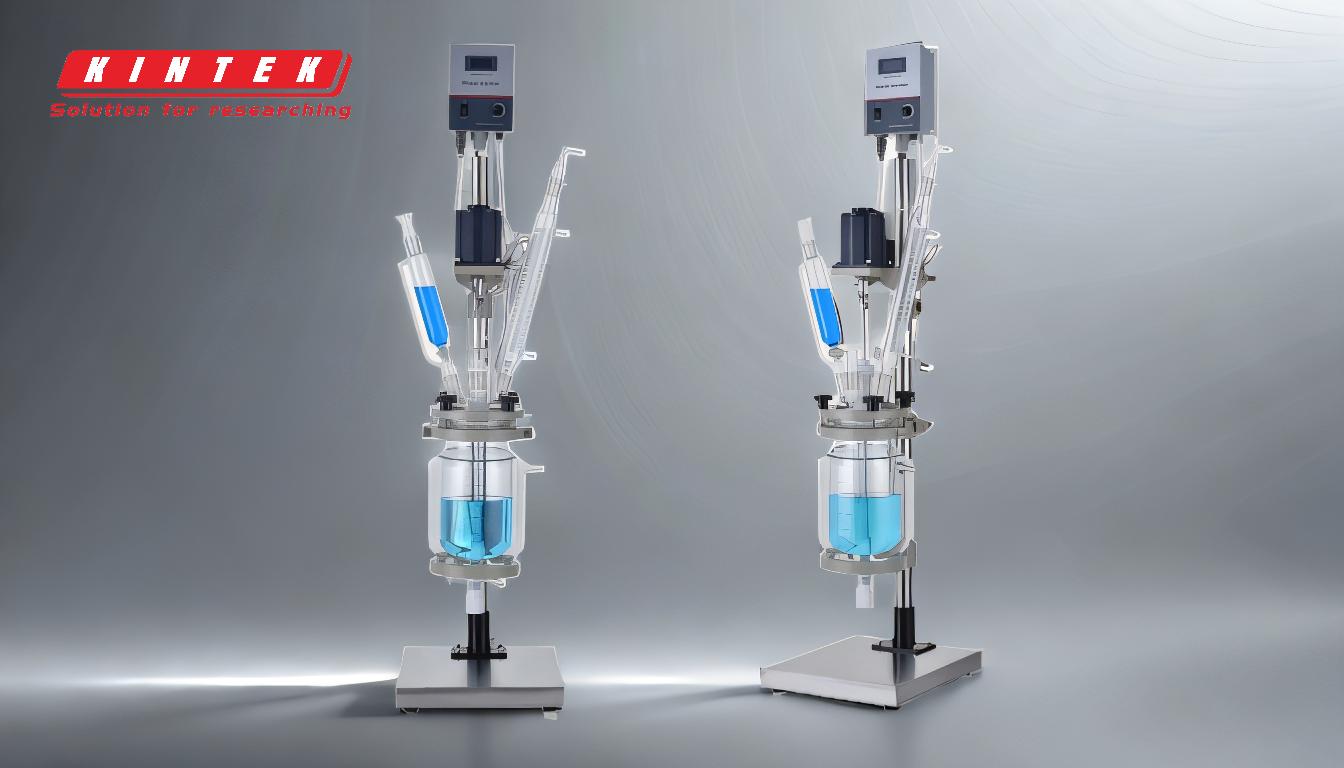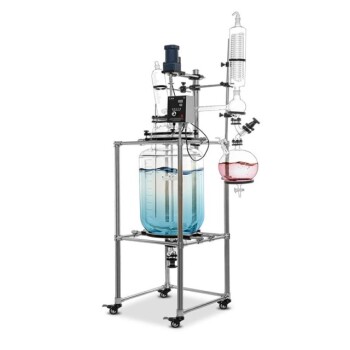A glass reactor is a specialized piece of equipment used in chemical processes to facilitate reactions, separations, and combinations under controlled conditions. It operates by agitating the reaction mixture while controlling parameters such as temperature, pressure, and reflux in a sealed, transparent environment. This transparency allows for real-time observation of the reaction process. Glass reactors are widely used in chemical research and industrial applications due to their compatibility with a broad range of chemicals and their ability to handle varying temperatures and pressures. They are essential for processes like chemical synthesis, hydrogenation, oxidation, distillation, and solvent synthesis, making them indispensable in laboratories and process industries.
Key Points Explained:

-
Primary Function of a Glass Reactor:
- A glass reactor is designed to facilitate chemical reactions, separations, and combinations in a controlled environment. It is particularly useful for processes requiring precise control over reaction parameters such as temperature, pressure, and agitation.
-
Key Operational Features:
- Agitation and Mixing: The reactor uses a centrally mounted agitator to mix the reactants thoroughly. Baffles inside the reactor ensure sufficient turbulence for effective mixing.
- Temperature Control: The reactor can operate at a wide range of temperatures, from as low as -80℃ to as high as 300℃, making it suitable for both low-temperature and high-temperature reactions.
- Pressure Control: It can operate under normal or negative pressure (vacuum), allowing for reactions that require specific pressure conditions.
- Transparency: The glass construction allows for real-time observation of the reaction process, which is crucial for monitoring and optimizing reactions.
-
Common Applications:
- Chemical Synthesis: Used for synthesizing new compounds by combining different chemicals under controlled conditions.
- Reaction Screening: Helps in testing and optimizing reaction conditions to achieve the best yields and product quality.
- Temperature-Sensitive Reactions: Ideal for reactions that require precise temperature control to prevent degradation or unwanted side reactions.
- Hydrogenation and Oxidation: Facilitates reactions that involve the addition of hydrogen or oxygen to a compound.
- Photochemical Reactions: Supports reactions that are initiated or accelerated by light.
- Distillation and Reflux: Used for processes that involve the separation of components based on their boiling points or for continuous boiling and condensation.
- Extraction and Separation: Helps in isolating specific compounds from a mixture.
- Purification and Concentration: Used to purify compounds by removing impurities or concentrating solutions.
-
Advantages of Using a Glass Reactor:
- Chemical Compatibility: Glass is resistant to a wide range of chemicals, making it suitable for various types of reactions.
- Versatility: Can handle a wide range of temperatures and pressures, making it adaptable to different chemical processes.
- Observability: The transparent nature of glass allows for easy monitoring of the reaction process, which is crucial for research and development.
- Safety: The sealed environment minimizes the risk of exposure to hazardous chemicals and ensures that reactions are contained.
-
Components and Accessories:
- Lid: The reactor has a lid that can accommodate various accessories such as stirrers, condensers, and thermometers.
- Stirrer: A centrally mounted agitator ensures thorough mixing of the reactants.
- Condenser: Used to cool and condense vapors, facilitating processes like reflux and distillation.
- Thermometer: Allows for precise monitoring and control of the reaction temperature.
- Baffles: Ensure sufficient turbulence for effective mixing and prevent the formation of stagnant zones.
-
Industrial and Research Use:
- Research Laboratories: Glass reactors are commonly used in research labs for developing new chemical processes, optimizing reaction conditions, and conducting small-scale experiments.
- Process Industries: In industrial settings, glass reactors are used for large-scale production of chemicals, pharmaceuticals, and other products requiring controlled reaction conditions.
In summary, a glass reactor is a versatile and essential tool in both research and industrial chemistry. Its ability to control critical reaction parameters, combined with its transparency and chemical compatibility, makes it invaluable for a wide range of chemical processes.
Summary Table:
| Feature | Details |
|---|---|
| Primary Function | Facilitates chemical reactions, separations, and combinations in controlled environments. |
| Temperature Range | -80℃ to 300℃, suitable for low- and high-temperature reactions. |
| Pressure Control | Operates under normal or vacuum conditions. |
| Transparency | Allows real-time observation of reactions. |
| Applications | Chemical synthesis, hydrogenation, oxidation, distillation, and more. |
| Advantages | Chemical compatibility, versatility, observability, and safety. |
| Components | Lid, stirrer, condenser, thermometer, and baffles. |
Ready to enhance your chemical processes with a glass reactor? Contact us today to learn more!










